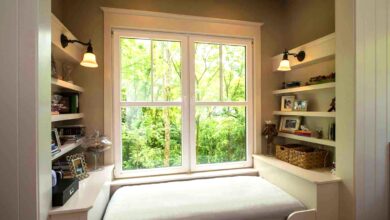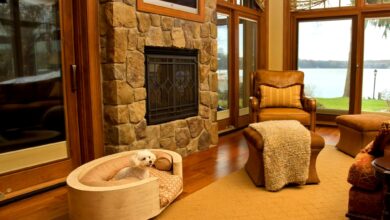How to Make Your Home More Energy-Efficient in 2025
This comprehensive guide will walk you through the best strategies to make your home more energy-efficient in 2025.

In 2025, energy efficiency is more important than ever. With rising utility costs and growing environmental concerns, homeowners are looking for smart ways to make your home more energy-efficient. Not only does this reduce your carbon footprint, but it also lowers energy bills and increases property value.
This comprehensive guide will walk you through the best strategies to make your home more energy-efficient in 2025. From simple DIY fixes to advanced smart home upgrades, we’ll cover everything you need to know.
Why Should You Make Your Home More Energy-Efficient?
Before diving into the solutions, let’s understand why energy efficiency matters:
- Lower Energy Bills – Reducing energy waste directly cuts down on electricity and heating costs.
- Increased Home Comfort – Proper insulation and efficient appliances maintain consistent temperatures.
- Higher Property Value – Energy-efficient homes are in high demand and sell faster.
- Environmental Benefits – Less energy consumption means reduced greenhouse gas emissions.
Now, let’s explore the best ways to make your home more energy-efficient in 2025.
1. Upgrade to Energy-Efficient Appliances
One of the easiest ways to make your home more energy-efficient is by replacing old appliances with ENERGY STAR-rated models. These appliances consume significantly less power while delivering the same performance.
Key Appliances to Upgrade:
- Refrigerators – Modern models use 40% less energy than older ones.
- Washing Machines – Front-loading machines save water and electricity.
- Dishwashers – ENERGY STAR dishwashers use less water and have efficient drying systems.
- HVAC Systems – High-efficiency furnaces and air conditioners reduce heating and cooling costs.
Pro Tip: Look for smart appliances that adjust energy usage based on real-time needs.
2. Improve Home Insulation
Poor insulation leads to heat loss in winter and cool air escape in summer, forcing your HVAC system to work harder. To make your home more energy-efficient, focus on these insulation upgrades:
Areas to Insulate:
- Attic & Roof – Heat rises, so proper attic insulation prevents energy loss.
- Walls & Floors – Insulated walls maintain indoor temperatures better.
- Windows & Doors – Weatherstripping and double-glazed windows reduce drafts.
Best Insulation Materials in 2025:
- Spray foam insulation
- Fiberglass batts
- Cellulose insulation (eco-friendly option)
3. Install Smart Thermostats
Smart thermostats like Nest, Ecobee, or Honeywell learn your schedule and adjust temperatures automatically. This helps make your home more energy-efficient by:
- Reducing heating/cooling when you’re away
- Optimizing temperatures based on weather forecasts
- Providing energy usage reports
Bonus: Many utility companies offer rebates for smart thermostat installations.
4. Switch to LED Lighting
Traditional incandescent bulbs waste 90% of their energy as heat. Switching to LED bulbs can:
- Use 75% less energy
- Last 25 times longer
- Be controlled via smart home systems for further savings
Where to Use LEDs:
- Recessed lighting
- Outdoor security lights
- Smart bulbs for automated scheduling
5. Use Solar Panels & Renewable Energy
Solar power is more affordable than ever in 2025. Installing solar panels helps make your home more energy-efficient by:
- Reducing reliance on grid electricity
- Qualifying for tax credits and incentives
- Potentially earning money through net metering
Alternative Renewable Options:
- Solar water heaters
- Small wind turbines (for rural homes)
- Geothermal heat pumps
6. Seal Air Leaks
Drafts around windows, doors, and ducts can increase energy bills by 10-20%. To make your home more energy-efficient, seal leaks with:
- Weatherstripping tape for doors and windows
- Caulk for gaps in walls and foundations
- Duct sealing for HVAC efficiency
How to Detect Leaks:
- Use a thermal camera
- Conduct a DIY candle test (watch for flickering flames near edges)
7. Optimize Water Heating Efficiency
Water heaters account for about 18% of home energy use. To make your home more energy-efficient, try these tips:
- Lower the thermostat to 120°F
- Insulate hot water pipes
- Install a tankless water heater (saves up to 30% energy)
- Use low-flow showerheads and faucets
8. Invest in Energy-Efficient Windows
Old single-pane windows are a major source of energy loss. Upgrading to double or triple-pane windows with Low-E coatings can:
- Block UV rays
- Reduce heat transfer
- Improve indoor comfort
Best Window Types in 2025:
- Gas-filled windows (argon or krypton)
- Smart glass (adjusts tint based on sunlight)
9. Adopt Smart Home Energy Management
Smart home technology helps make your home more energy-efficient by automating energy-saving practices:
- Smart Plugs – Cut power to idle devices
- Energy Monitoring Systems – Track real-time usage
- Automated Blinds – Adjust based on sunlight to regulate temperature
10. Practice Energy-Saving Habits
Even small daily habits contribute to efficiency:
- Unplug devices when not in use
- Wash clothes in cold water
- Use natural light during the day
- Set computers to sleep mode
Final Thoughts
Learning how to make your home more energy-efficient in 2025 is a smart investment. Whether through appliance upgrades, better insulation, or smart technology, every step reduces energy waste and saves money.
Start with small changes and gradually implement bigger upgrades. Over time, you’ll enjoy a greener, more cost-effective home while contributing to a sustainable future.
Ready to make your home more energy-efficient? Begin with an energy audit to identify the best areas for improvement!











